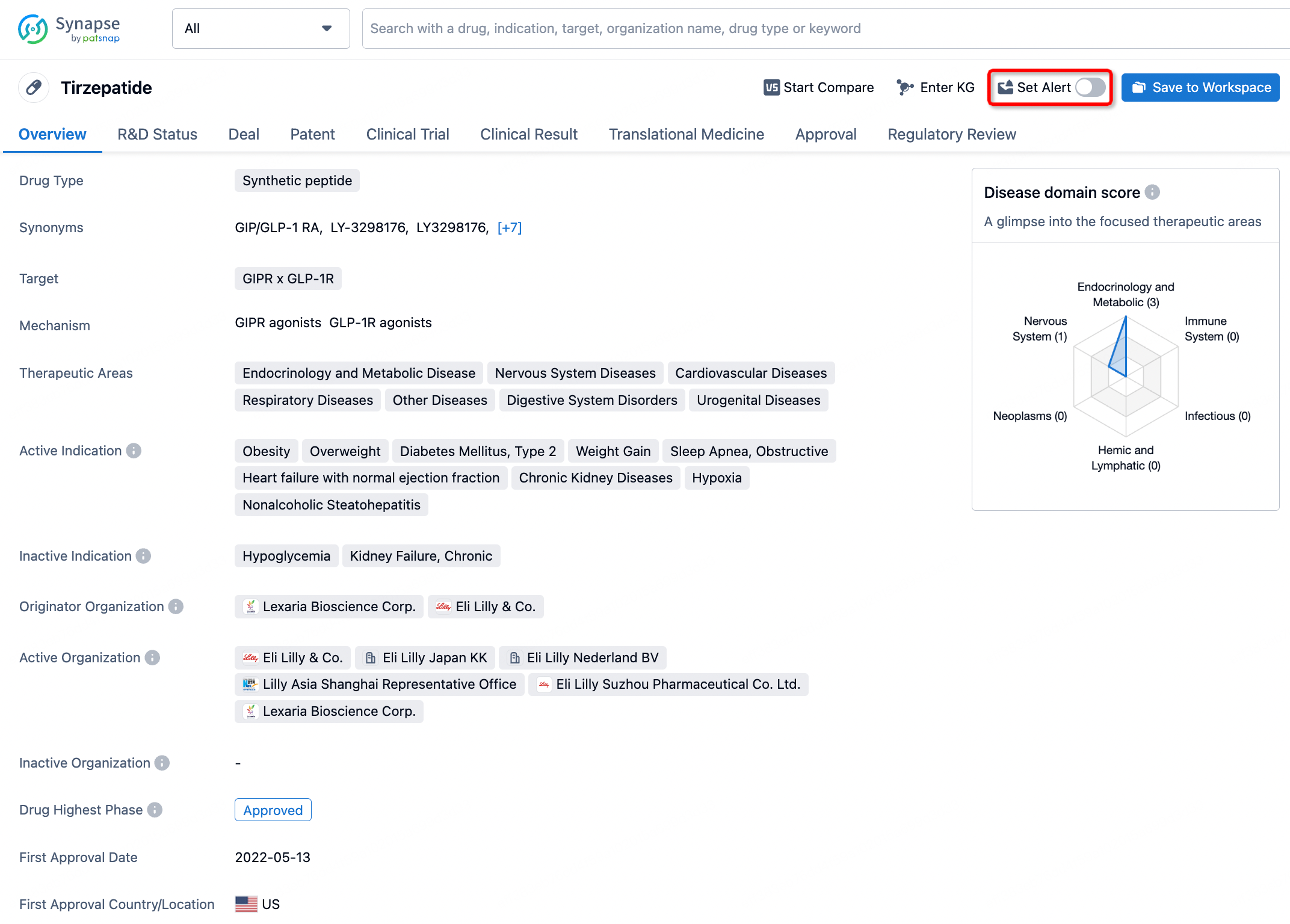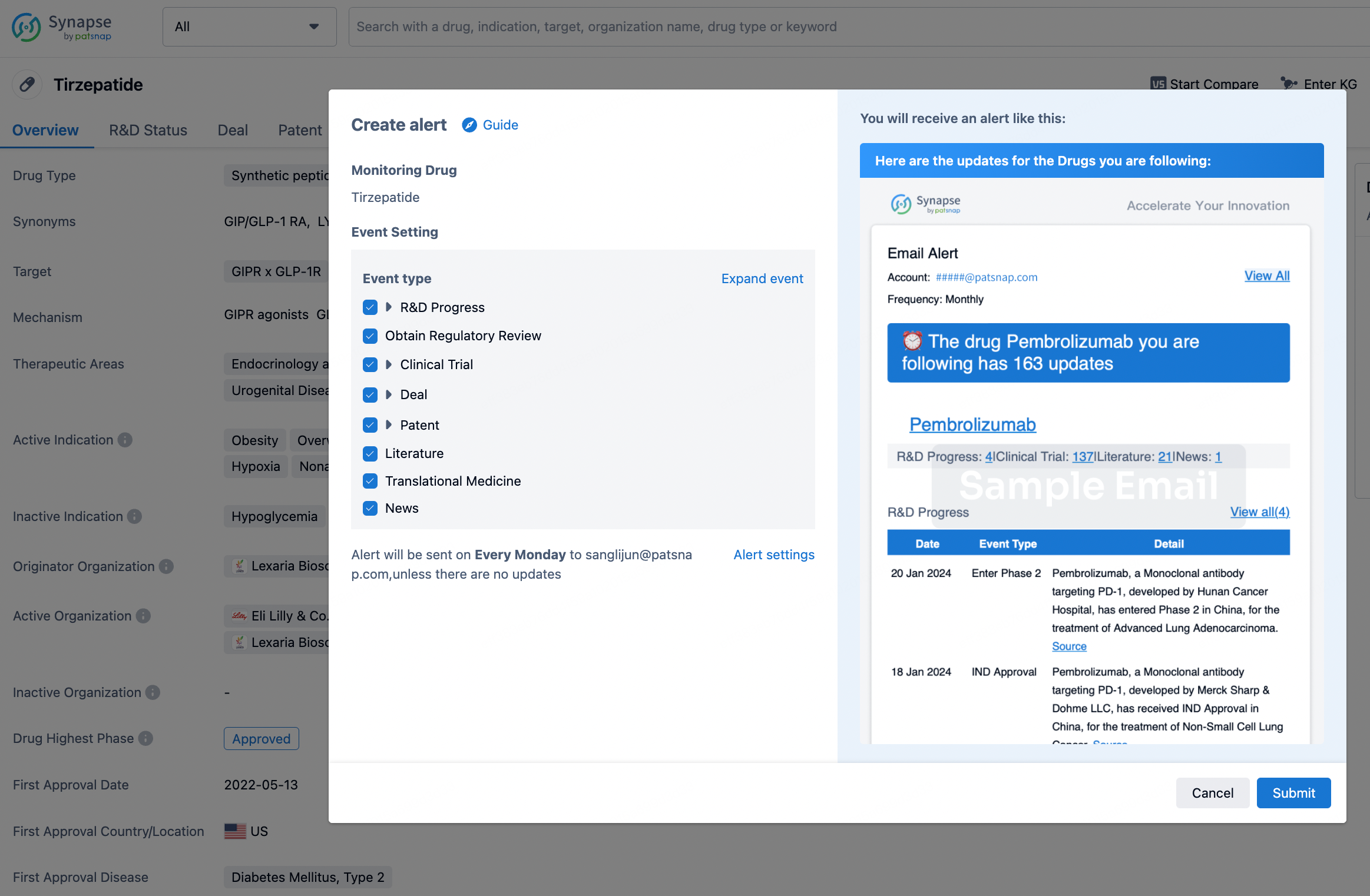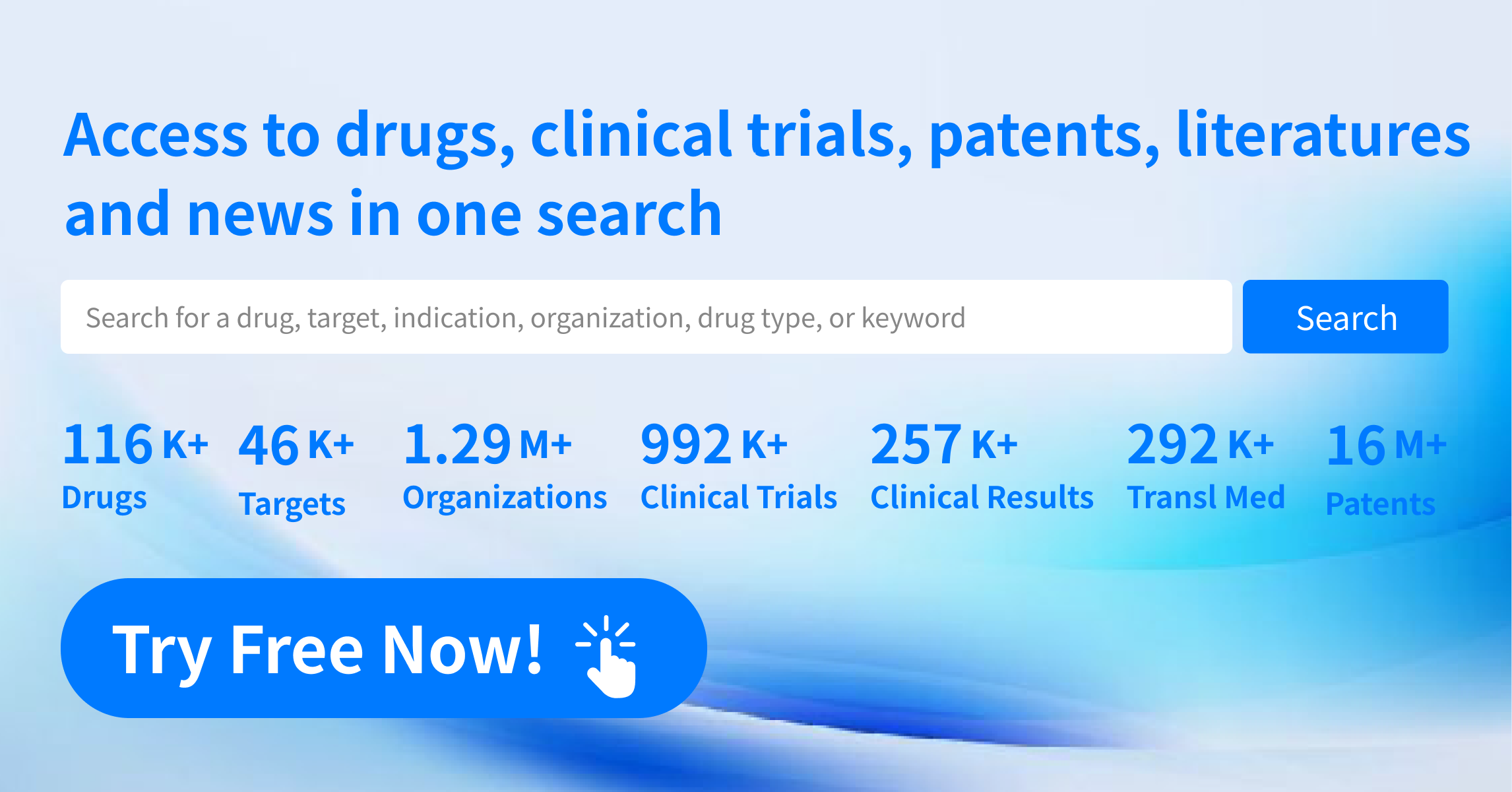Request Demo
What is L-Cysteine used for?
15 June 2024
L-Cysteine is a non-essential amino acid that has garnered significant attention in the fields of medicine, nutrition, and biochemistry. Known for its integral role in several biochemical processes and as a building block for proteins, L-Cysteine has various therapeutic applications and is available under several drug trade names. Some of the commonly known trade names include Acetadote, Mucomyst, and Cystagon. These drugs are typically aimed at treating conditions like acetaminophen poisoning, mucolytic activity (breaking down mucus), and certain genetic disorders such as cystinosis. Research institutions globally are delving into the potential uses of L-Cysteine, particularly focusing on its antioxidant properties, its role in metabolic processes, and its potential in neuroprotective therapies.
L-Cysteine belongs to the class of drugs known as amino acids and is particularly noted for its sulfur-containing structure, which is crucial for various metabolic pathways. It is indicated for a variety of conditions, ranging from detoxification processes in the liver to enhancing immune function and promoting skin health. Research is ongoing to explore its broader implications, particularly in chronic diseases and age-related conditions.
L-Cysteine Mechanism of Action
The mechanism of action of L-Cysteine is multifaceted, reflecting its diverse roles in the body. One of the primary functions of L-Cysteine is its involvement in the synthesis of glutathione, a powerful antioxidant. Glutathione plays a pivotal role in neutralizing free radicals and protecting cells from oxidative stress, which is implicated in aging and various chronic diseases. By boosting glutathione levels, L-Cysteine indirectly contributes to the protection of tissues and organs from damage.
Additionally, L-Cysteine serves as a precursor to taurine, another sulfur-containing compound essential for bile salt formation, cardiovascular function, and the development and function of skeletal muscle, the central nervous system, and the cardiovascular system. Furthermore, L-Cysteine is crucial for protein synthesis, detoxification, and various metabolic functions including the conversion of homocysteine into cysteine, thereby reducing homocysteine levels in the blood, which is beneficial for cardiovascular health.
L-Cysteine also exhibits mucolytic properties, meaning it can break down mucus, which is particularly beneficial in respiratory conditions such as chronic obstructive pulmonary disease (COPD) and cystic fibrosis. The sulfhydryl group in L-Cysteine disrupts the disulfide bonds in mucus, reducing its viscosity and making it easier to expel.
How to Use L-Cysteine
The administration of L-Cysteine can vary depending on the condition being treated and the formulation of the drug. It is available in several forms, including oral tablets, capsules, intravenous solutions, and inhalation forms. The method of administration depends on the specific medical condition and the healthcare provider's recommendation.
For instance, in cases of acetaminophen overdose, L-Cysteine is typically administered intravenously as Acetadote. The treatment is usually initiated within 8 to 10 hours of overdose for optimal efficacy, though it can still be beneficial if started later. The onset of action is relatively rapid when given intravenously, usually within 30 minutes to an hour.
For mucolytic purposes, L-Cysteine may be administered via inhalation as Mucomyst. This helps to directly target the respiratory tract, facilitating the breakdown of mucus in the airways. The onset of action is almost immediate, providing relief from congestion and aiding in mucus clearance.
Oral forms of L-Cysteine, such as those used for enhancing glutathione levels or treating cystinosis, are taken as dietary supplements or specific medications like Cystagon. These formulations typically have a slower onset of action, as they need to be absorbed through the gastrointestinal tract and metabolized by the liver before exerting their effects.
What is L-Cysteine Side Effects
While L-Cysteine is generally well-tolerated, it can cause some side effects, particularly when taken in higher doses or through specific routes of administration. Common side effects include gastrointestinal issues such as nausea, vomiting, and diarrhea. These are more likely to occur with oral administration and can often be mitigated by taking the supplement with food or adjusting the dosage.
Intravenous administration of L-Cysteine can occasionally cause reactions such as rash, hypotension, and anaphylaxis, a severe allergic reaction that requires immediate medical attention. Inhalation forms may cause throat irritation, cough, and bronchospasm, especially in individuals with reactive airway diseases.
Contraindications for L-Cysteine use include hypersensitivity to the drug or any of its components. It is also contraindicated in individuals with a history of asthma or bronchospasm when administered via inhalation, due to the risk of exacerbating respiratory symptoms. Patients with severe renal impairment should use L-Cysteine with caution, as it is metabolized by the kidneys, and accumulation could lead to toxicity.
What Other Drugs Will Affect L-Cysteine
L-Cysteine can interact with several other medications, affecting its efficacy and safety. For example, concurrent use of nitroglycerin and other nitrates with L-Cysteine can potentiate the blood pressure-lowering effects of these drugs, leading to significant hypotension.
Antibiotics such as tetracyclines may have reduced effectiveness when used alongside L-Cysteine, as the amino acid can chelate with metals and affect the absorption of these medications. Similarly, L-Cysteine can interact with iron supplements and may reduce their absorption, so it is advisable to take them at different times of the day.
Moreover, combining L-Cysteine with other antioxidants, like vitamin C and vitamin E, can have synergistic effects, enhancing their overall antioxidant capacity. However, these combinations should be approached cautiously and under medical supervision to avoid potential overdosing or imbalance in antioxidant levels.
In conclusion, L-Cysteine is a versatile amino acid with significant therapeutic potential across a range of medical conditions. Understanding its mechanism of action, proper usage, side effects, and drug interactions is crucial for maximizing its benefits while minimizing risks. As research continues to unfold, new applications and insights into this fascinating compound are likely to emerge, further solidifying its role in modern medicine and nutrition.
L-Cysteine belongs to the class of drugs known as amino acids and is particularly noted for its sulfur-containing structure, which is crucial for various metabolic pathways. It is indicated for a variety of conditions, ranging from detoxification processes in the liver to enhancing immune function and promoting skin health. Research is ongoing to explore its broader implications, particularly in chronic diseases and age-related conditions.
L-Cysteine Mechanism of Action
The mechanism of action of L-Cysteine is multifaceted, reflecting its diverse roles in the body. One of the primary functions of L-Cysteine is its involvement in the synthesis of glutathione, a powerful antioxidant. Glutathione plays a pivotal role in neutralizing free radicals and protecting cells from oxidative stress, which is implicated in aging and various chronic diseases. By boosting glutathione levels, L-Cysteine indirectly contributes to the protection of tissues and organs from damage.
Additionally, L-Cysteine serves as a precursor to taurine, another sulfur-containing compound essential for bile salt formation, cardiovascular function, and the development and function of skeletal muscle, the central nervous system, and the cardiovascular system. Furthermore, L-Cysteine is crucial for protein synthesis, detoxification, and various metabolic functions including the conversion of homocysteine into cysteine, thereby reducing homocysteine levels in the blood, which is beneficial for cardiovascular health.
L-Cysteine also exhibits mucolytic properties, meaning it can break down mucus, which is particularly beneficial in respiratory conditions such as chronic obstructive pulmonary disease (COPD) and cystic fibrosis. The sulfhydryl group in L-Cysteine disrupts the disulfide bonds in mucus, reducing its viscosity and making it easier to expel.
How to Use L-Cysteine
The administration of L-Cysteine can vary depending on the condition being treated and the formulation of the drug. It is available in several forms, including oral tablets, capsules, intravenous solutions, and inhalation forms. The method of administration depends on the specific medical condition and the healthcare provider's recommendation.
For instance, in cases of acetaminophen overdose, L-Cysteine is typically administered intravenously as Acetadote. The treatment is usually initiated within 8 to 10 hours of overdose for optimal efficacy, though it can still be beneficial if started later. The onset of action is relatively rapid when given intravenously, usually within 30 minutes to an hour.
For mucolytic purposes, L-Cysteine may be administered via inhalation as Mucomyst. This helps to directly target the respiratory tract, facilitating the breakdown of mucus in the airways. The onset of action is almost immediate, providing relief from congestion and aiding in mucus clearance.
Oral forms of L-Cysteine, such as those used for enhancing glutathione levels or treating cystinosis, are taken as dietary supplements or specific medications like Cystagon. These formulations typically have a slower onset of action, as they need to be absorbed through the gastrointestinal tract and metabolized by the liver before exerting their effects.
What is L-Cysteine Side Effects
While L-Cysteine is generally well-tolerated, it can cause some side effects, particularly when taken in higher doses or through specific routes of administration. Common side effects include gastrointestinal issues such as nausea, vomiting, and diarrhea. These are more likely to occur with oral administration and can often be mitigated by taking the supplement with food or adjusting the dosage.
Intravenous administration of L-Cysteine can occasionally cause reactions such as rash, hypotension, and anaphylaxis, a severe allergic reaction that requires immediate medical attention. Inhalation forms may cause throat irritation, cough, and bronchospasm, especially in individuals with reactive airway diseases.
Contraindications for L-Cysteine use include hypersensitivity to the drug or any of its components. It is also contraindicated in individuals with a history of asthma or bronchospasm when administered via inhalation, due to the risk of exacerbating respiratory symptoms. Patients with severe renal impairment should use L-Cysteine with caution, as it is metabolized by the kidneys, and accumulation could lead to toxicity.
What Other Drugs Will Affect L-Cysteine
L-Cysteine can interact with several other medications, affecting its efficacy and safety. For example, concurrent use of nitroglycerin and other nitrates with L-Cysteine can potentiate the blood pressure-lowering effects of these drugs, leading to significant hypotension.
Antibiotics such as tetracyclines may have reduced effectiveness when used alongside L-Cysteine, as the amino acid can chelate with metals and affect the absorption of these medications. Similarly, L-Cysteine can interact with iron supplements and may reduce their absorption, so it is advisable to take them at different times of the day.
Moreover, combining L-Cysteine with other antioxidants, like vitamin C and vitamin E, can have synergistic effects, enhancing their overall antioxidant capacity. However, these combinations should be approached cautiously and under medical supervision to avoid potential overdosing or imbalance in antioxidant levels.
In conclusion, L-Cysteine is a versatile amino acid with significant therapeutic potential across a range of medical conditions. Understanding its mechanism of action, proper usage, side effects, and drug interactions is crucial for maximizing its benefits while minimizing risks. As research continues to unfold, new applications and insights into this fascinating compound are likely to emerge, further solidifying its role in modern medicine and nutrition.
How to obtain the latest development progress of all drugs?
In the Synapse database, you can stay updated on the latest research and development advances of all drugs. This service is accessible anytime and anywhere, with updates available daily or weekly. Use the "Set Alert" function to stay informed. Click on the image below to embark on a brand new journey of drug discovery!
AI Agents Built for Biopharma Breakthroughs
Accelerate discovery. Empower decisions. Transform outcomes.
Get started for free today!
Accelerate Strategic R&D decision making with Synapse, PatSnap’s AI-powered Connected Innovation Intelligence Platform Built for Life Sciences Professionals.
Start your data trial now!
Synapse data is also accessible to external entities via APIs or data packages. Empower better decisions with the latest in pharmaceutical intelligence.


